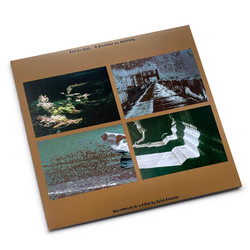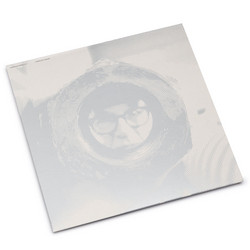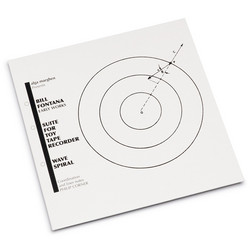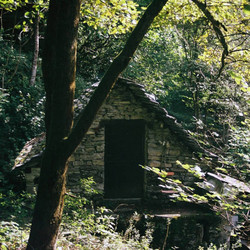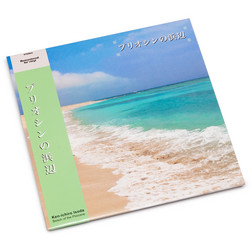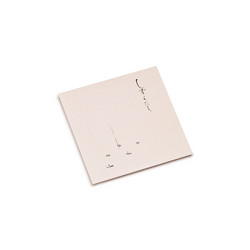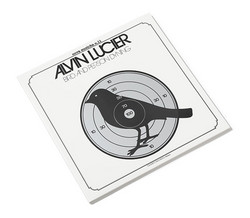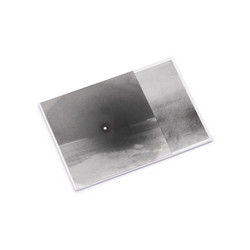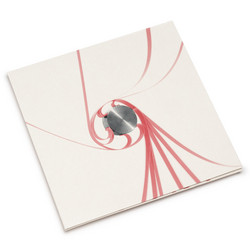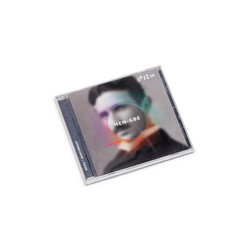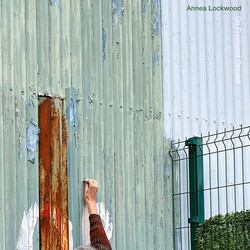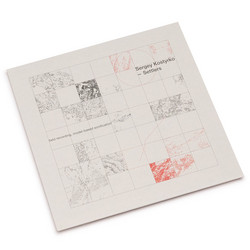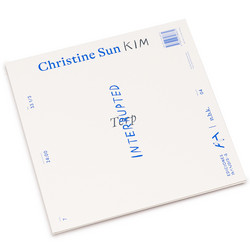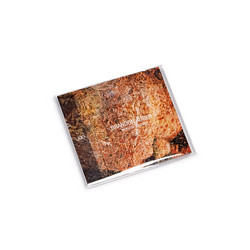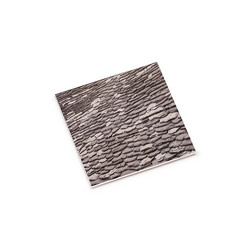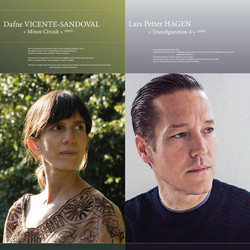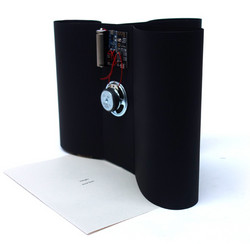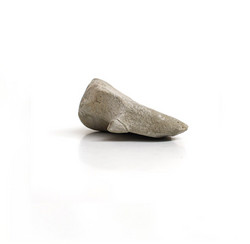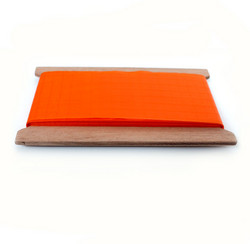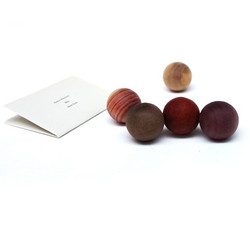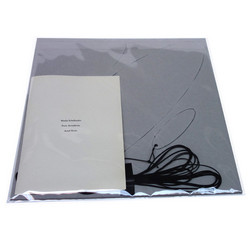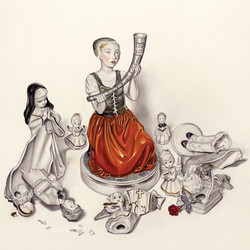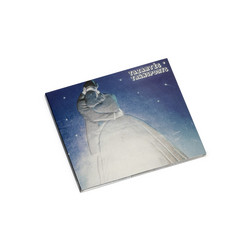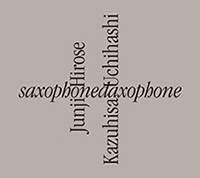Minuzia consists in an acoustic version of an audio installation that the French bassoon player Dafne Vicente-Sandoval had been presenting at a few sound art exhibitions; a handful bassoon cane reeds were regularly soaked into water, and these very thin slices of wood would start crackling in the course of their drying out process. These minute sounds were amplified by contact microphones and listened to through headphones.
With an original text by the British anthropologist Tim Ingold.
Score:
Soak the reeds in water for a long time.
Let them dry.
Be aware of the activity of the reed fiber over the span of the drying process.
Possible variations could be: soak each of them for a different amount of time; let them dry indoors or outdoors, on wood or on metal, in humid weather or under the sun; let them dry with one another or spread in space; listen from a distance or take one in your hand and hold it near your ear.
A quiet place and time are recommended.
“Every crack or click, then, is not so much a quantum of sound, wrapped up in itself, as a prick in the fabric of the auditory field. And to hear it is not to receive the sound, ready-made, but to make it out, as we might make out the light of a torch in darkness.
In making things out, we cease to be spectators or auditors in a world in which there are things to see and hear only because they have already settled into fixed and final forms. We find ourselves, instead, immersed in the current of their formation. In this current, eyes and ears are no longer the organs of a body primed for the receipt of visual and auditory stimuli. Rather, the body itself is entirely given over to the stretch of attention by which we reach out to things and touch them. It becomes – as we say colloquially – ‘all eyes’ and ‘all ears’: not a body with eyes but an eye-body; not a body with ears but an ear-body. Listening for the cracks of the drying reed, or the clicks of contracting pipes, I find I am not so much facing a wall of silence an inhabiting it. It is a silence that opens up, from the inside, into a world undergoing perpetual birth. To ‘hardly hear’, then, is not to be halfway between hearing and not hearing, as if that were possible, but to draw one’s awareness upstream, to the very moment of incipience wherein sound is born from silence.” - Tim Ingold, Reed
Notes on Minuzia (Pianpicollo, August 2019 - Paris, September 2020)
To name this object, the English language - which makes no distinction between the plant in its natural state and the musical accessory - would say reed. Spanish, likewise, has only one word, caña. French and Italian both distinguish: roseau / anche, canna / ancia. The reeds that make up this object have already been cut, trimmed, gouged, but not yet shaped, thinned out, folded - the next steps in their gradual transformation into a bassoon reed. How then to name this object which stands in-between, neither plant nor finished product?
***
It is in another in-between - between wet and dry - that the crackling sounds of the reed fibers become gradually audible. An attentive ear can perceive these transformations of material which remain invisible to the naked eye. The crackling sounds are the measure of the organic changes at work, which sight fails to note and touch only approximates. These sounds reveal the limits of our perception. When exactly do they begin? When do they end? Our perception can only make a guess; at both ends, the two states which delimit this phenomenon - the dry and the soaked - are translated to us by a seeming silence.
***
Simplicius, 1108.18, ad loc.
“‘If the bushel of millet makes a sound (when it falls), then the single grain of millet and the ten-thousandth part of a grain will make a sound.’ This was the way Zeno used to put his questions.”
Aristotle, Phys. Book VII. 250a 19
“Therefore Zeno’s argument is not true, that there is no part of a grain of millet that does not make a sound: for there is no reason why any such part should not in any length of time fail to move the air that the whole bushel moves in falling.”
Amongst the various interpretations of the paradox of Zeno known as ‘The Grain of Millet’, we read in the Stanford Encyclopedia of Philosophy:
“Did Zeno also claim to show that a single grain of millet does not make a sound? One speculation is that our senses reveal that it does not, since we cannot hear a single grain falling. Then Aristotle’s response is apt; and so is the similar response that hearing itself requires movement in the air above a certain threshold.”
***
Like all extremely tenuous sounds, the crackles of the fibre are apt to excite the listener’s imagination. Is what I believe I’m hearing coming from the reed? From elsewhere? Or is it my imagination which is fabricating evidence as my senses strive to perceive? The low volume of the crackles therefore favors an acute awareness not only of the surrounding sounds - that one may try to filter out - but also of the ear itself. The ambiguity of the sound source delicately points to the porosity of inside and outside that characterizes hearing. Listening to this ‘presque rien’ may allow us to actively address a property of one of our senses which is otherwise often passively experienced.
Prêter l’oreille, ‘to lend an ear’: the French expression suggests that the organ momentarily dis- sociates itself from the body to which it belongs in order to enter into an encounter with an otherness - whispering, rustling, murmuring - that it seeks to hear. In this outward-reaching act, the perceiving body de-locates itself.
***
The etymology of the French word anche - from which the Italian ancia stems - comes from the mediaeval Latin enchia, ‘fountain neck’, which will later become ence in Anglo-Norman, water conduit. The idea of a conductivity associated with the water element draws from the origins of the word - and is also to be found in the bassoon reed.
Like any water-absorbing material, the reed fiber reveals its own history in reacting to the water. Its greater or lesser elasticity, the straightness of its grain, and its density, are all variables which shape, by creating resistances, the response of the reed to water. These variables convey the specificities which characterize the growth of each reed - but also of the manipulations imposed a posteriori by human hand. The nature of the sounding phenomenon - its duration, its intensity, the internal rhythms of the crackling - is therefore contingent. But if it varies from one reed to another depending on a past inscribed in the fiber, it will also fluctuate according to the immediate environment in which the encounter between water and reed takes place.
***
Removed from its natural habitat, transformed by human hand, the reed, even when crafted into a bassoon reed, remains a living material, responsive to the here and now. Its sensitivity is essentially hygrometric: more than the room temperature, it is the humidity level which primarily determines the reaction of the plant fiber to its environment. These parameters directly influence the vibratory mode of the reed, which will in turn affect the playing of the bassoonist.
Another in-between to note in passing: the reed plant has the hybrid physical trait of being visco-elastic; its composition associates the viscous properties of the lignin to the elastic ones of the parenchyma cells. As a result, it has vibrational characteristics proper to both liquids and solids.
***
When played in a conventional manner, the reed is almost entirely enclosed in the mouth of the instrumentalist, therefore providing it with a stable degree of moisture. This stability is relative, but it mostly depends upon one factor: the saliva produced by the instrumentalist’s body - its quantity, its texture.
The saliva feeds the vibrating capacity of the reed while it is being played. Over time, it is also partly responsible for the gradual dampening of the vibration due to the chemical breakdowns caused by its compounds.
The vibrating stability provided by the traditional bassoon embouchure supports an aesthetic standard of uniformity. Day after day, the instrumentalist seeks to recover ‘her’ sound, against the inner alterity which individualizes each bassoon reed - or even the same reed played tomorrow elsewhere. The inherent variability of the material is experienced by the instrumentalist as an indeterminate factor to be overcome to the greatest extent possible.
***
In opposition to this stands a technique of sound production that I’ve developed in recent years in which the onset of the reed vibration at its lowest possible threshold is precisely controlled. This technique avoids the sharp attack which normally characterizes double reed instruments, and allows a sustaining sound which remains likewise at a soft level. The lips of the bassoonist are positioned at the extreme edge of the reed’s opening, allowing the vibration to propagate itself slowly to the full reed; the sound emerges very gradually.
This technique increases the sensitivity of the reed to the external conditions of playing, making its response even more unpredictable. Finding itself almost completely outside of the mouth - and therefore more exposed to the surrounding air - the vibration of the reed is affected in turn by the multiple parameters which determine the thermal and hygrometric values of a given place at a given moment.
Through the exposure of the reed to the outside, the technique makes audible the complexity at work within each emergence. The onset of the vibration celebrates the singularity of a pre- carious constellation, one which arises from the linking together of a reed, a pair of moist lips, and an immediate environment. The sonic weave which then entails remains likewise mobile, unstable, non-linear: it carries within it the promise of the fragile persistence of the living.
During a concert, the physical presence of the audience will have a direct influence on the humidity level, which will fluctuate along with the inhalation and exhalation of the listeners. The life of the bassoon reed - its vibration - will be filled up by these other existences through that which most irreducibly testifies to the vitality of our own organism - breath.
***
Occam XIII by Éliane Radigue, Müntzers stern and Solo II by Jakob Ullmann are compositions for solo bassoon that I have developed in the last decade; to a large extent they are built on this technique of sound production. Not only do these pieces embrace the permeability to present circumstances favored by the technique, they turn this permeability into a hidden matrix of the composition. The behavior of the reed will shape the minutiae of the sound, but, even more, it will steer the musical course that the sound takes.
If one were to subtract the cultural, social, musical layers that one inevitably brings to a listening experience, one could choose to listen to a performance of one of these pieces as a direct translation into sound of the physical phenomena that are here described. The performance might be understood as a singular joining-together of diverse materials that mutually affect each other - reed, saliva, air, the body of the instrumentalist, the bodies of the listeners, the room itself, etc. A translation into sound of multiple factors bringing forth commensurately complex sounding results.
At the other extreme stands this object -- Minuzia -- as the simplest expression of these forces at work.
Dafne Vicente-Sandoval
Translated from the French by Charles Curtis.
Minuzia was realized within the Pianpicollo Research Residency, with support from Fondazione Cassa di Risparmio di Cuneo and Regione Piemonte.
